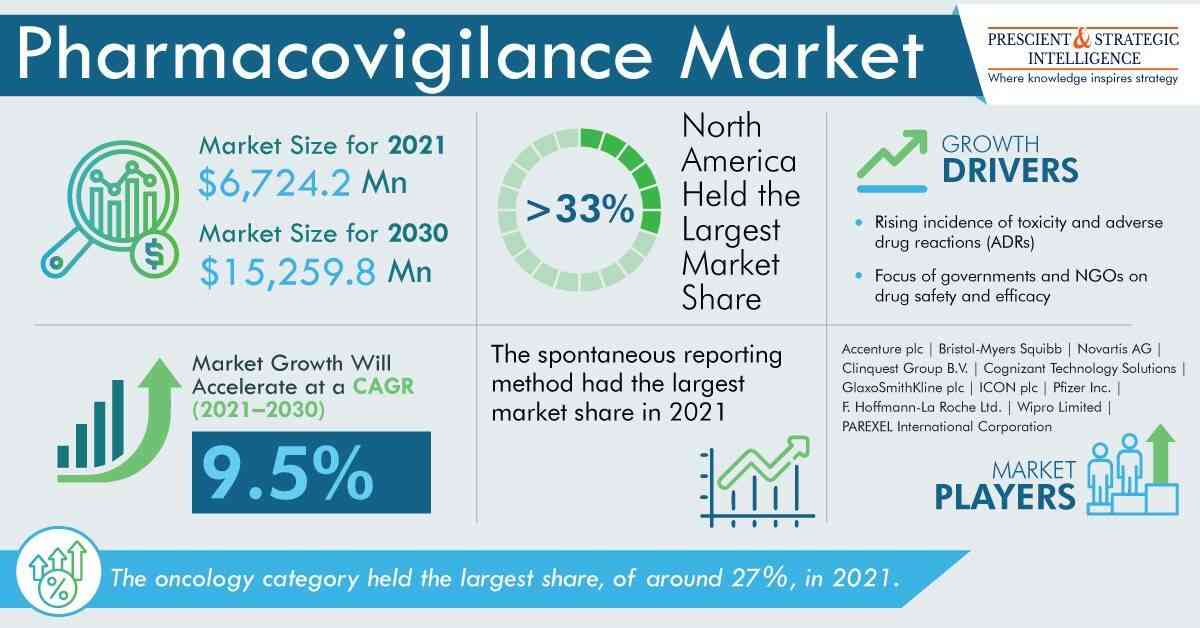What Is The Growth Rate Of The Pharmacovigilance Market?
- - Category: Business Ideas
- - 21 Sep, 2022
- - Views: 38
- Save

The global pharmacovigilance market is expected to reach $15,259.8 million by 2030 from $6,724.2 million in 2021.
The global pharmacovigilance market is expected to reach $15,259.8 million by 2030 from $6,724.2 million in 2021, growing at a CAGR of 9.5% during 2021–2030.
In 2021, based on therapeutic area, the oncology category held a 27% share. Due to the side-effects of cancer drugs, monitoring their safety is extremely important. In this regard, pharmacovigilance aids in detecting, managing, and even preventing adverse drug reactions and limiting the requirement for needless medical prescriptions.
The high patient compliance for drug usage, rising concerns regarding drug safety, and growing incidence of toxicity and ADRs propel the pharmacovigilance market growth. Moreover, non-government and government organizations are focusing on drug efficacy and safety, which is compelling drug developers and entities conducting medical trials to avail of pharmacovigilance services.
Key Findings of Pharmacovigilance Market Report
- During the projection period, the APAC region is predicted to expand at the highest rate, of about 10.6%, owing to the improving healthcare infrastructure, rising incidence of chronic pain in regional countries, and increasing drug development activities.
- The pharmaceutical market spent $83 billion on research and development in 2019, which was around 10 times of what was invested each year in the 1980s.
- In 2021, phase IV clinical trials accounted for more than 70% of the revenue in the product lifecycle category. This was due to the high number of clinical trials conducted to assess a new drug's effectiveness and safety, wherein the fourth phase is the most critical.
- The spontaneous reporting technique had the biggest pharmacovigilance market share in 2021. Because of its widespread usage in detecting important, novel, and uncommon ADRs, along with its cost-effectiveness and efficiency, this technique finds wide adoption.
- Novartis AG reported clinical data on JDQ443, an experimental selective, covalent, and orally accessible KRASG12C inhibitor, in April 2022. KontRASt-01 (NCT04699188) is a multi-center, phase Ib/II open-label dosage escalation trial of JDQ443 in patients with advanced solid tumors having the KRAS G12C mutation, such as NSCLC and colorectal cancer.
- PAREXEL International Corporation, a contract research organization, and the n-Lorem Foundation, announced a partnership in February 2022 to support n-Lorem's efforts to explore and deliver experimental antisense oligonucleotide (ASO) medicines to patients with nano-rare diseases.


